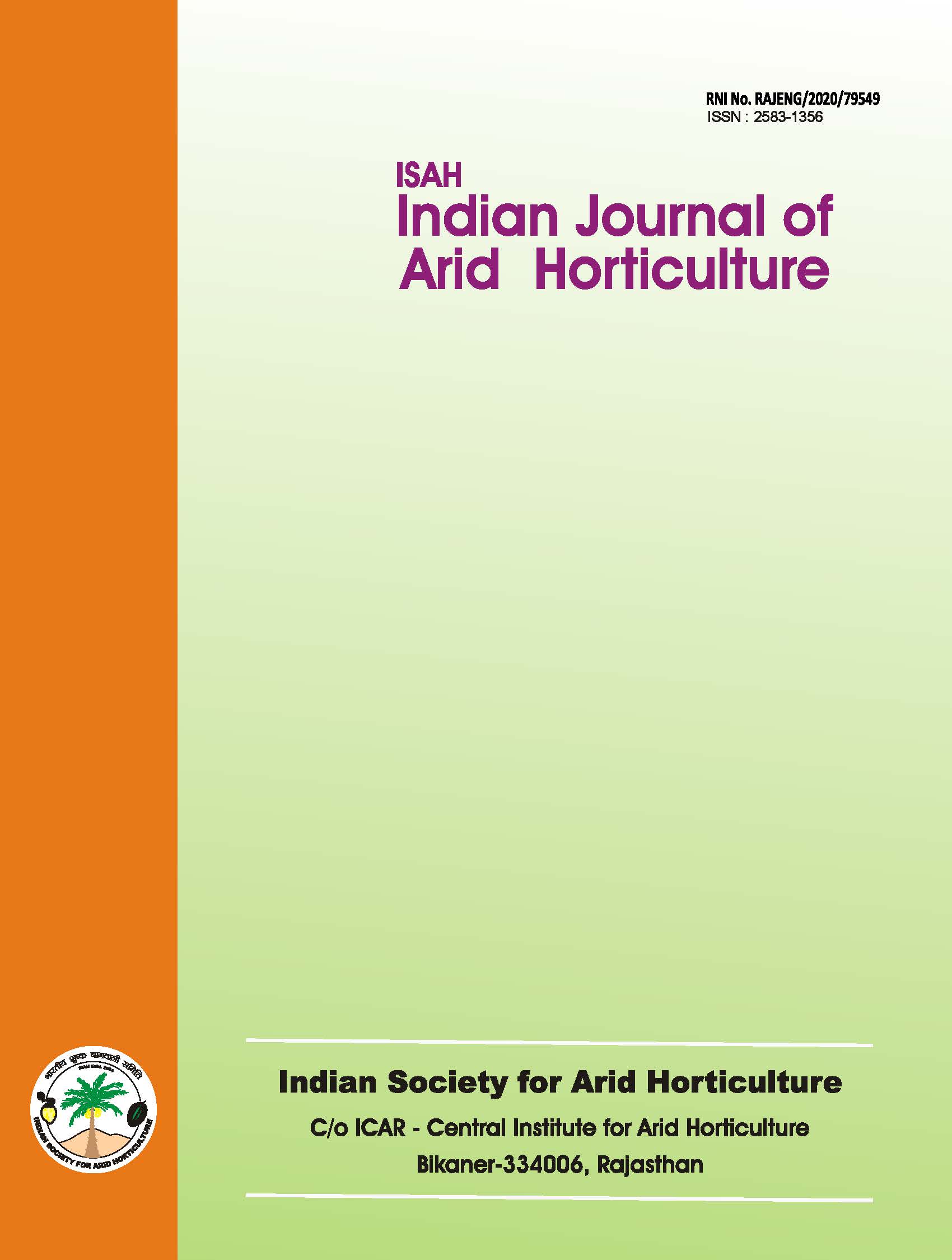Effect of peeling and thickness of slices on shelf-life of dehydrated kachari (Cucumis callosus L.)
Keywords:
Sanitation, dehydration, solar dryers, physico-chemicalAbstract
Kachari (Cucumis callosus L.) is one of the minor vegetables of family cucurbitaceae. The post-harvest losses in Kachari vary from 30-40 per cent due to its perishable nature and glut during harvesting time, which also reduces the market value of the fruit. Hence, dehydration is the only solution to overcome the problem of post-harvest losses as well as to provide high returns to the growers alongwith the availability of the fruit during off-season. Appropriate size of slices and peeling of fruits are good for drying and dehydration and improve the appearance, colour, quality of dehydrated product. Sulphuring treatment also improve the quality of the product. Sanitation was maintained in solar dryer as the dehydrated produce should be free from dust, flies, bees, etc. The solar dryers are simple to fabricate and well suited to rural conditions and small scale food processing industries. Keeping these points in view the present investigation has been carried out to study the effect of peeling, thickness of slice, sulphuring treatments and drying and dehydration techniques on the physico-chemical quality of the product.Downloads
References
Amerine, M.A., Pangborn, R.M. and Rocssler, E.B. (1965). Principles of Sensory Evaluation of Food Academic Press, London.
A.O.A.C. (1990). Official Methods of Analysis. Association of Official Analytical Chemists, Washington, D.C.
Cai, Y.Z. and Corke, H. (2001). Effect of post harvest treatments on Amranthus betacyhin degradation evaluated by visible/near informed spectroscopy. J. Food Sci. 66: 1112-18.
Fisher. R.A.(1950). Statistical Methods of Research Workers. Oliver and Boyd, Edinburgh. Khurdia, D. and Roy, S.K. (1986). Solar drying of fruits and
vegetables. Indian Food Packer: 40(4): 28-39. Lee, S., Lee, M., Lee, H., Cho, J., Lee, Y. and Shim, K. (1994). Effect of quality changes according to drying methods of astringent prsimmon (Diospyros kaki L.) after peeling RDA J. Agril. Sci. Farm Mgt. Agril. Engg. Esriculture and Farm Products Utilization. 36(2): 699-704.
Ranganna, S.(1991). Manual of Analysis of Fruit and Vegetable Products 2nd ed. Tata Mc Graw Hill
Co., New Delhi, India.
Raghupathy, R. and Thangvel, K. (2003). Dehydration of
fruits
and
vegetables.http://
www.technofeneur,net/times/technology/
scitechaug03/furits_veg..htm.
Roy, S.K. and Singh, R.N., (1979). Studies on utilization of bael fruit for processing. III Preparation and preservation of bael fruit products. Indian Food Packer 33(5):9-14.
Tripathi, V.K., Singh, M.B. and Singh, S. (1988). Studies on comparative compositional changes in different preserved products of aonla var. Banarasi. Indian Food Packer: 42(4): 60-66.

